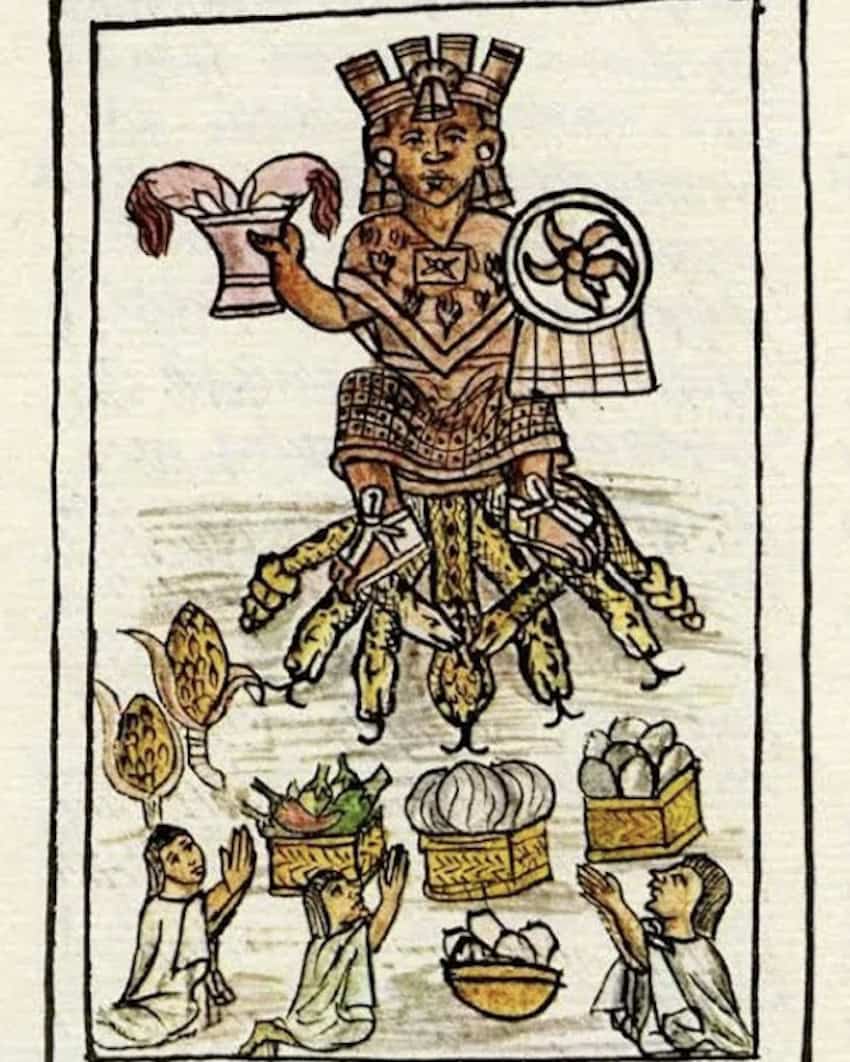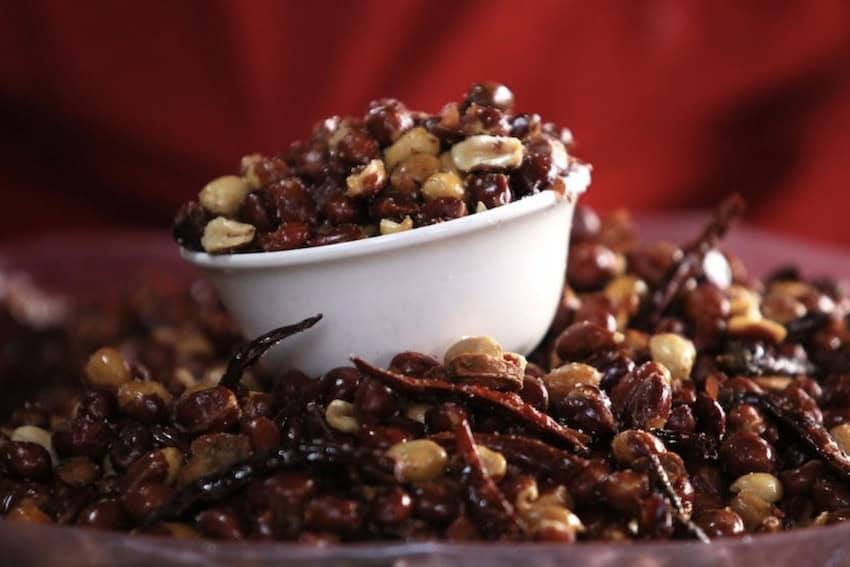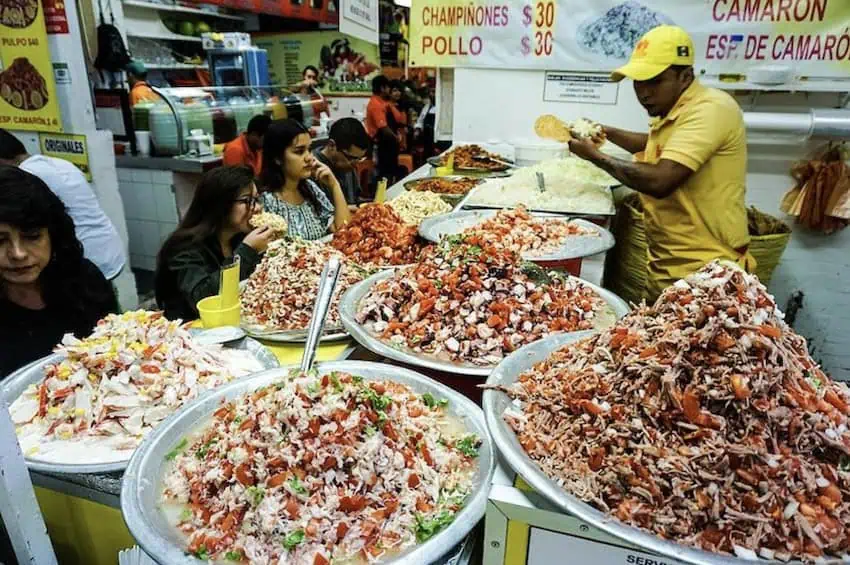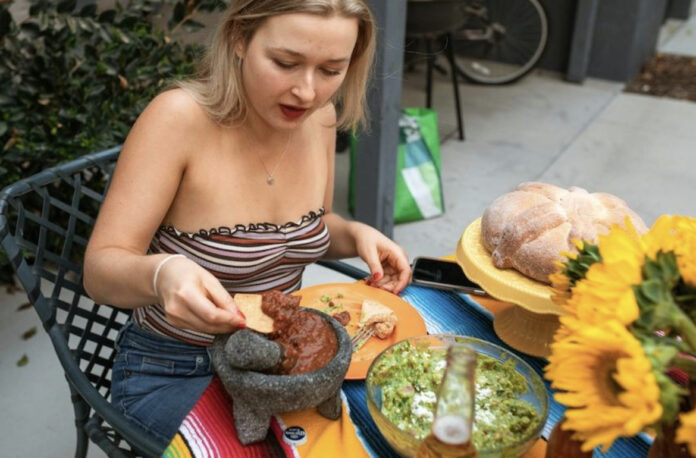As a regular diner at the nearby taquerías, my partner constantly asks me to join him for tacos. More than once, we have witnessed foreign customers asking the taquero if the place offers spiceless salsa. Especially in the Condesa and Roma area: “No picante,” they plead with heavy accents. Some play it safe, and just order a side of guacamole.
We understand. Eating spicy food comes practically from the cradle here, in Mexico. There is not even a word for ‘picante’ or ‘enchilarse’ in English: it all falls under the category ‘spicy,’ which can refer to anything related to spices — from Indian masala to Sichuan pepper or Mexican salsa picante. Due to the growing demand for not-hot salsa, however, some local puestos have succumbed to what their customers order.

Even though one can understand why foreigners seek non-spicy sauces, no joy compares to eating tacos with very spicy sauce. Beyond the fear of missing out, trying “salsa bien enchilosa” is a cultural experience, intimately intertwined with the Mesoamerican voices that can still be heard in Mexican lands.
Honoring the great Tlatlauhqui Cihuatl Ichilzintli
Paleontological remains show that chili has grown in the Americas for, at least, 10,000 years. Specifically, Universidad de Guadalajara researcher Edgar Pulido Chávez explains, “in the geographic, biocultural and climatic zone located between central Mexico and Central America, known as Mesoamerica.” It’s safe to say, then, that my country shares roots, literally, with at least 64 different species of chili, as per the Natural Resources Ministry’s records.
Given the great diversity of species, it was only natural for the ancient Mesoamerican civilizations in present-day Mexico to offer these precious fruits to their gods. “Chili was not exempt from ritual connotations and was part of the offerings made to the gods,” writes archaeologist and editor of Arqueología Mexicana magazine Enrique Vela. The Mexica even had a goddess of chilis, Tlatlauhqui Cihuatl Ichilzintli — which literally translates as “respectable lady of the great, red chile” from Nahuatl.

Beyond the religious aspect of chili, ancient Mexicans already used its spice to condiment their cuisine. Cacao, as a drink, was infused with chili seeds, which made it a bitter and spicy drink — definitely different from hot cocoa or the alleged ceremonial cacao as we know it today. Moreover, spicy salsas have been deeply influenced not only by the pre-Hispanic culinary arts, but also by the European touch that arrived in America during the Colonial times.
This syncretic dance makes “Mexican sauces […] much more than just condiments,” explains the Agriculture and Rural Development Ministry, “they are an expression of Mexico’s rich culinary culture.”
¡Que pique! — Why trying spicy, hot salsa matters
Even today, centuries after the Mexica gods ceased to appear on the altars (officially), we Mexicans preserve a mythical relationship with chili and its different species. ‘Enchilarse’ is a part of local tables every day across the country: feeling the hot rush of your taste buds burning is probably the quintessential Mexican experience.

Because, yes, picante is not a flavor, but a sensation. “Also referred to as pungency,” writes Chávez for The Conversation, “it is an adaptation of the chili plant to defend its fruits from herbivorous mammals and other predators.” That is why, if someone is not exactly used to bathing their food with salsa, their body sweats and they feel the sudden need to drink a lot of water — disclaimer: water will not help.
This happens because the brain literally feels like the tongue is on fire, according to the BBC. When the tastebuds interact with capsaicin, the chemical substance that creates the hot feeling in the mouth, the saliva binds it to receptors called TRPV1. That’s when chilli pepper — and practically anything that you prepare with it — starts to sting or burn.
Even though this article is an open invitation for foreign visitors and people living in Mexico to try a primordial piece in the great mosaic of our cuisine, by all means, do not do something you’re not comfortable with. Again, chilli peppers are naturally designed to defend themselves from predators. If your stomach is simply not used to these kinds of spices, you can easily get stomach aches and have a really bad time in the aftermath — especially in the bathroom, if the editors allow me an eschatological note.
Beyond a worthy-of-mention warning, trying hot salsa does not imply covering your favorite Mexican dishes with it. Trying is just that: trying — probably just a few drops on your next visit to a local market, nearest puesto or taquería. This, of course, leads us to the following question:

Where to try authentic (and spicy) Mexican salsa?
The perfect place to try authentic and spicy Mexican salsas is at a Mexican home, of course. If you’re visiting a friend or have relatives living in Mexico, please ask them to share some of their homemade salsa with you. Especially if it’s made in a molcajete — that is an excellent starting point.
If you’re in your digital nomad era, and definitely do not have Mexican friends or relatives, a local market is your choice. Even Polanco, Mexico City’s most elegant neighborhood, has a local market. If you’re planning on playing it safe, you can always try the quesadillas stand — where they usually serve “vitamin T,” as well: tacos, tlacoyos, tamales and so on. At the bar or the table, you will always find a bowl of salsa verde, salsa roja and sour cream.
If you’re feeling adventurous, you can dive into the Ribera de San Cosme to El Califa de León restaurant. This is the first authentic taquería in Mexico to ever receive a Michelin star. You can live the entire experience of ordering your tacos al pastor directly from “el trompo,” that massive spinning top of pork fillet covered in axiote chili. Try arriving early — around 1 p.m. — or you can expect a long line of customers, waiting to try their mythical salsa roja.
If you’re not exactly into the Historic Center experience, you can always try a more easy-going location. Ever been to Coyoacán? If you’re visiting — or living in — chaotic CDMX, this is the borough to try the best Mexican hot salsas in the capital. Go to ‘Mercado de Antojitos’ and sit at the first quesadilla stand you find — you can thank me later.
Andrea Fischer contributes to the Mexico News Daily Features desk. She has edited and written for National Geographic en Español and Muy Interesante México, and continues to be an advocate for anything that screams science. Or yoga. Or both.
